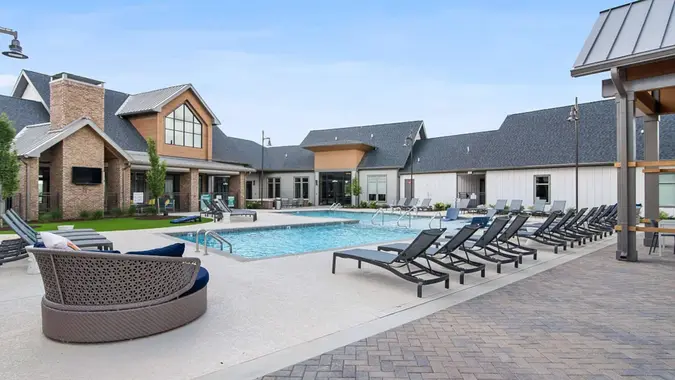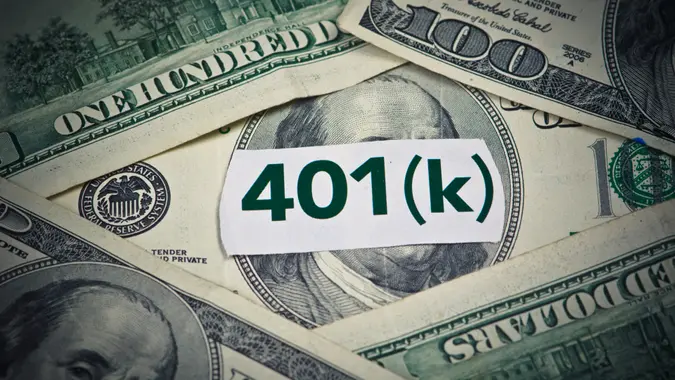How Much the Average Upper-Class Retiree Spends Monthly at Age 82

Commitment to Our Readers
GOBankingRates' editorial team is committed to bringing you unbiased reviews and information. We use data-driven methodologies to evaluate financial products and services - our reviews and ratings are not influenced by advertisers. You can read more about our editorial guidelines and our products and services review methodology.

20 Years
Helping You Live Richer

Reviewed
by Experts

Trusted by
Millions of Readers
For the average retiree, spending tends to be relatively modest, given that many people do not have enough retirement income to support lavish spending. Only half of retirees feel like they built a large enough nest egg, according to a Transamerica survey.
Yet that leaves a good chunk of Americans who can comfortably spend in retirement, especially considering that spending tends to decrease as you age. Still, even for those in the upper-class, spending in retirement isn’t necessarily lavish, especially for those who enter into their 80s.
Looking at the Big Picture
Retirement often means that you’ve had time to finish paying off big-ticket items like a house and cars. And even for those who are well-off, sometimes day-to-day spending decreases, such as if you’re not actively traveling as much in your 80s versus your 60s, for example.
Indeed, 50% say that their spending has decreased in retirement, versus 39% who say it stayed the same, and only 11% say it decreased, according to Transamerica.
More specifically, only 3% of retirees spend over $7,000 per month, and just 1% spend more than $10,000 per month, according to an Employee Benefit Research Institute (EBRI) survey.
In comparison, among the highest quintile of earners across ages, average monthly household spending is around $12,508, according to the Consumer Expenditure Surveys (CE) program from the U.S. Bureau of Labor Statistics.
This suggests that a tiny portion of retirees spends as much as the average upper-class household does, although the average upper-class retiree still likely spends more than most seniors.
What Spending Looks Like at Age 82
Data on spending at age 82 is limited, but we can estimate this amount by analyzing CE surveys.
First, we can use the CE data on spending based on income levels, although this does not break down by age. As mentioned, those in the highest quintile spend approximately $12,508 per month per household, which is about 94% more than average. We can then apply this 94% increase based on what the CE surveys say about spending in different age brackets.
For those in the age 55 to 64 range, average household spending is about $6,948 per month. From 65 to 74, the average dips to about $5,429, which is approximately a 22% decrease over 10 years. Similarly, spending declines about 19% for those ages 75 and over, where the average per household is around $4,419.
So, while the calculations are imperfect, given in part because the CE surveys do not break out spending per age beyond the over-75 group, we can approximate that spending falls somewhere in the realm of a 2% drop per year, based on the observed downtrend starting at age 55.
Thus, if we take the approximately $5,429 in monthly spending of those ages 65 to 74 and assume that represents the midpoint of age 70, we can apply a 2% decline until age 82. That results in average monthly spending of around $4,163.
If we then apply the 94% increase in spending that applies for the highest-quintile earners versus the average (although this does not take age into account), that results in monthly spending of $8,078.
So, while the math is far from perfect, this likely is on the right track, given that it has some overlap with the spending amounts suggested by the EBRI survey.
Ultimately, the limited data available suggests that upper-class retirees spend significantly more than the average retiree, but spending is still often much lower than it would be for the average upper-class person.
Still, even if spending falls in retirement, it’s important to have a clear plan for how you will manage your spending in a way that sustains you throughout the rest of your life, while also supporting any future goals, like passing any money on to family as an inheritance. To that point, upper-class retirees often face unique challenges, such as around estate planning.
That’s why even if you think you have plenty of money to spend in retirement, meeting with a financial advisor or retirement specialist can be prudent. You should ensure that your strategies around spending, investing, managing risk through insurance, and other areas of retirement planning are set up to support your long-term goals so you can more comfortably enjoy retirement.
 Written by
Written by  Edited by
Edited by 

























